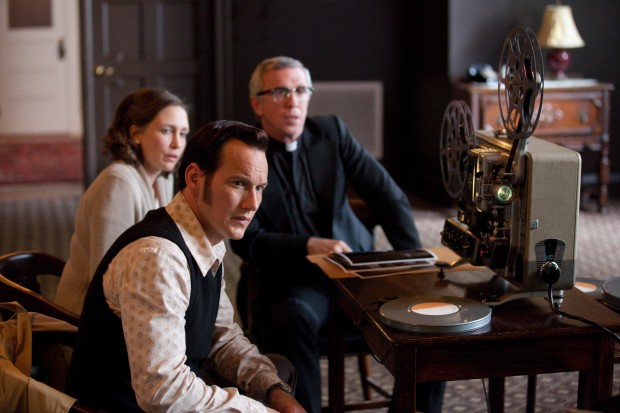NEW YORK (CNS) — Movies involving demonic possession and Catholic faith practices always are an uncomfortable mix, as in “The Conjuring” (Warner Bros.).
The demons get a presumption of truth and the run of the plot, while the solemn rite of exorcism is reduced to a kind of voodoo practiced by entrepreneurial ghostbusters with dubious credentials in cobwebbed New England basements.
[hotblock]
Then again, the value of horror films is measured by authentic scares, not theology, no matter how bent out of shape. “The Conjuring” has many intelligent, stylishly rendered frights, usually involving apparitions popping out of the dark in tight confines. It’s satisfyingly high on the jolt meter and other genre conventions, but sub-par on Catholicism — not in a derogatory manner, mind you, but unburdened by pesky things like, oh say, facts.
It’s the story of real-life paranormal investigators and “demonologists” Ed and Lorraine Warren (Patrick Wilson and Vera Farmiga), the couple responsible for uncovering, among other famous ghosts, the Amityville Horror. Like all Warren exploits, it’s based on a “true story,” and the screen informs us that Ed (who died in 2006) was the only American layman permitted by the Catholic Church to perform exorcisms.
That claim is redolent of the hinky-dink aroma of a carnival midway, but the Warrens always used their Catholicism to give themselves credibility with the public, if not exactly a firm seal of approval from church authorities. This story is set in 1971. In 1985, Cardinal Joseph Ratzinger (the future Pope Benedict XVI), then head of the Vatican Congregation for the Doctrine of the Faith, banned laypeople from performing the exorcism rite.
Anyway, exorcisms require the approval of a bishop. In this film, a parish priest just says he’ll call the Vatican. The approval doesn’t come in time, so the Warrens, like John Wayne at the Alamo, cast out the demon themselves, scattering crucifixes about. Otherwise, there’d be no big finish.
Director James Wan and screenwriters Chad Hayes and Carey W. Hayes limn the story of the Perron family. Parents Roger and Carolyn (Ron Livingston and Lili Taylor) move their five young daughters into a rundown Rhode Island house with creaking floorboards, peeling wallpaper, doors with hinges that have never known oil, a walled-off basement — in short, perfection.
The property has long been cursed with a demon that infiltrates first the household, then the mother, forcing her to kill her children. That’s what happened in the 19th century to a quite immense woman named Bathsheba, who occasionally pops up along with ghosts of her daughter, whom she hanged, and her son, slain with a big knife. For good measure, a demon-possessed doll skitters around and leaves notes.
Carolyn gets the worst of it, of course, since the demon squeezes her hard enough to leave bruises before taking her over entirely. Adding to the spookiness, it turns out that the Perrons never had their daughters baptized, since they’re not at all religious. An actual departure to the gates of hell must have been too much for the film’s budget, however, since that’s not shown.
The film contains a skewed view of Catholic faith practices, intense action sequences, mild gore, fleeting profanity, and intense but nonviolent scenes involving children. The Catholic News Service classification is A-III — adults. The Motion Picture Association of America rating is R — restricted. Under 17 requires accompanying parent or adult guardian.
***
Jensen is a guest reviewer for Catholic News Service.
PREVIOUS: ‘Pacific Rim’ rains down monsters, machines and mayhem
NEXT: ‘RED 2’: Seniors up to challenge of saving the world, again




Apparently, from what i’ve read, Lorraine Warren (Ed died a number of yrs back) will give all the “Museum items, including the Annabelle doll” to the Vatican when she herself dies.
I will say that i have doubts about god, the church, catholics in general,many of whom i think are false and sanctimonious. The little catholic that is left in me (if any at all) would wish for some kind of tangible truth, but people like the Warrens ( and others) make it even more difficult.
Where i hesitate in being overly critical and i don’t know why, are in cases like the Lourdes story, but people like the Warrens and their so-called claims ( a number of which have been debunked) that they are somehow associated with the church leave me baffled.
Simon